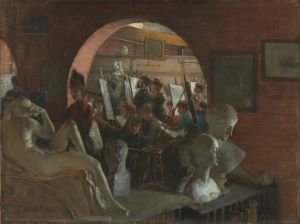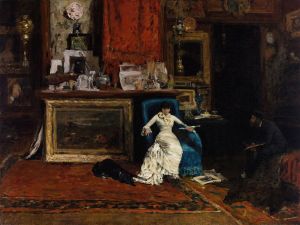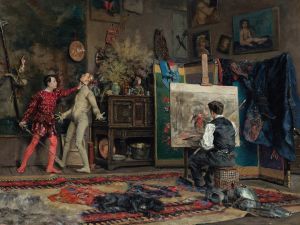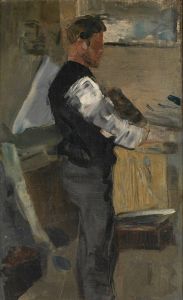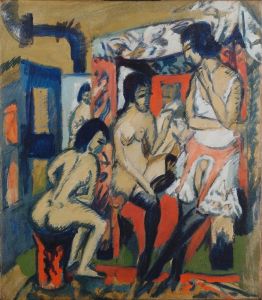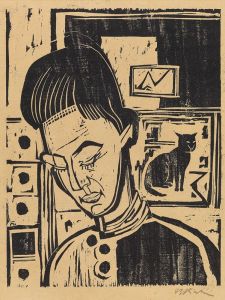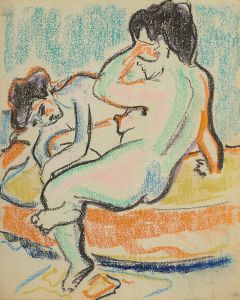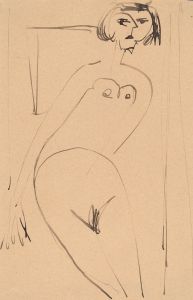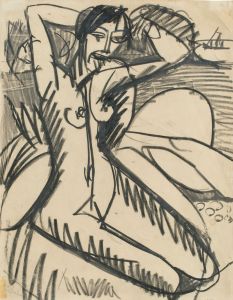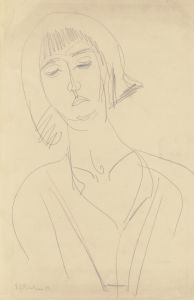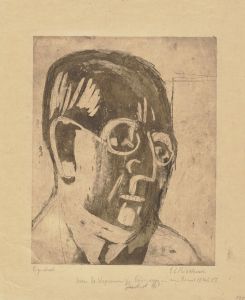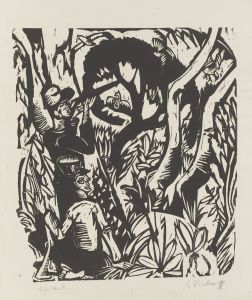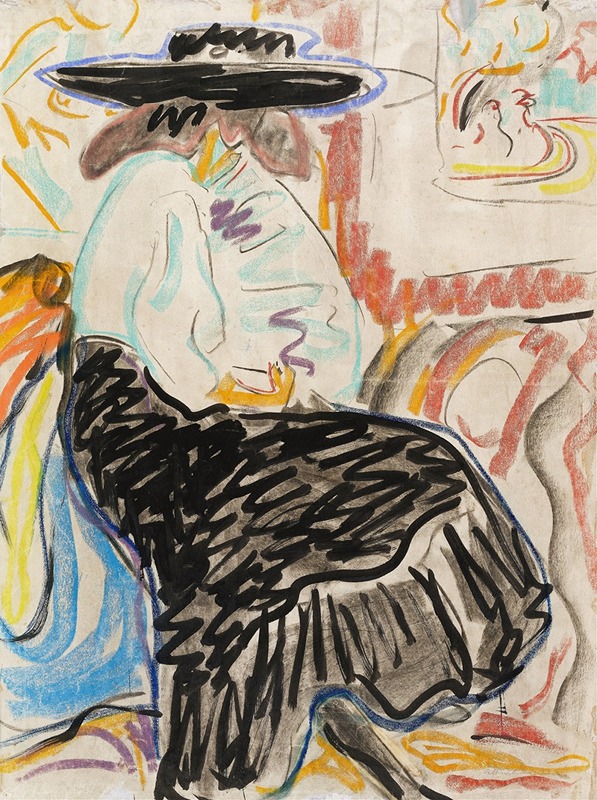
Seated Woman in the Studio
A hand-painted replica of Ernst Ludwig Kirchner’s masterpiece Seated Woman in the Studio, meticulously crafted by professional artists to capture the true essence of the original. Each piece is created with museum-quality canvas and rare mineral pigments, carefully painted by experienced artists with delicate brushstrokes and rich, layered colors to perfectly recreate the texture of the original artwork. Unlike machine-printed reproductions, this hand-painted version brings the painting to life, infused with the artist’s emotions and skill in every stroke. Whether for personal collection or home decoration, it instantly elevates the artistic atmosphere of any space.
Ernst Ludwig Kirchner's Seated Woman in the Studio is a painting created by the German Expressionist artist, who was a founding member of the influential art movement Die Brücke (The Bridge). Kirchner, known for his bold use of color and dynamic compositions, played a significant role in the development of early 20th-century modern art. This particular work reflects his characteristic style, which often combined emotional intensity with innovative techniques.
The painting depicts a seated woman in an interior setting, likely Kirchner's studio. The figure is rendered with expressive brushstrokes and vibrant colors, a hallmark of Kirchner's work. The composition emphasizes the psychological presence of the subject, rather than adhering to strict realism. The studio setting, a recurring theme in Kirchner's oeuvre, often served as a space for exploring the relationship between artist, model, and environment. The woman, whose identity is not specified in available records, is portrayed in a contemplative pose, contributing to the introspective mood of the piece.
Kirchner's work during this period was heavily influenced by his interest in non-Western art, particularly African and Oceanic art, as well as the urban environment of early 20th-century Germany. These influences are evident in the stylized forms and flattened perspectives seen in Seated Woman in the Studio. The painting also reflects the broader goals of the Die Brücke group, which sought to break away from academic traditions and embrace a more direct, emotional form of artistic expression.
The exact date of creation for Seated Woman in the Studio is not definitively documented, but it is consistent with Kirchner's works from the 1910s, a period when he was highly active in Berlin. During this time, Kirchner produced numerous portraits and studio scenes that explored themes of modernity, isolation, and the human condition.
Today, Seated Woman in the Studio is recognized as an important example of Kirchner's contribution to Expressionism. The painting is held in a public or private collection, though specific details about its current location or provenance are not widely available in public records. Kirchner's legacy continues to be celebrated for his innovative approach to color, form, and emotional depth, which have left a lasting impact on the history of modern art.





